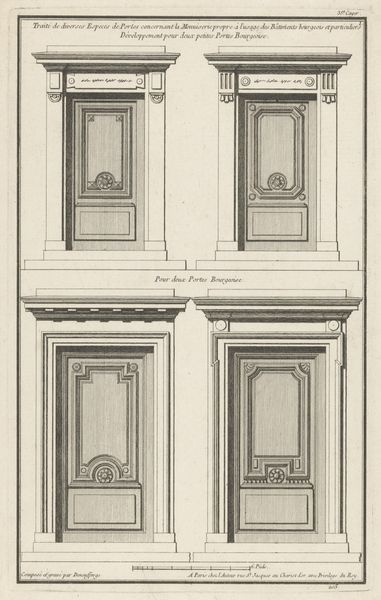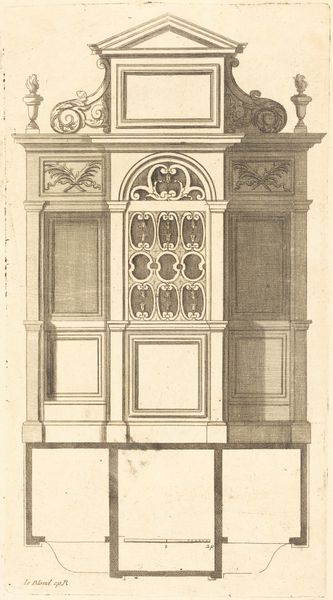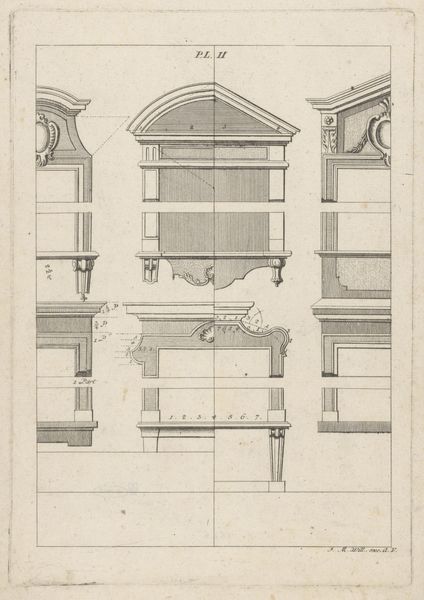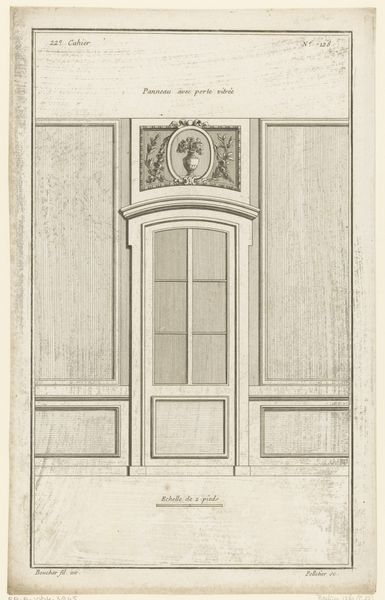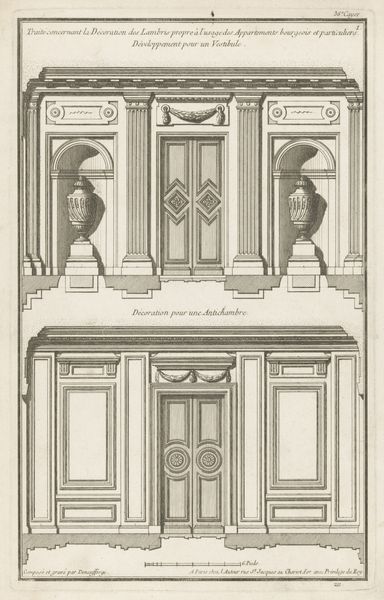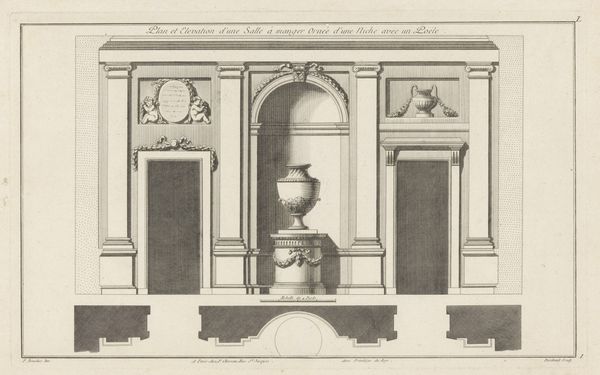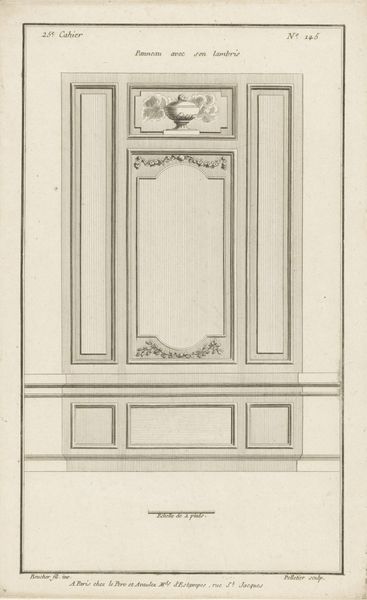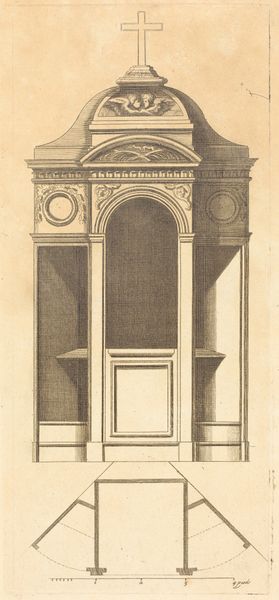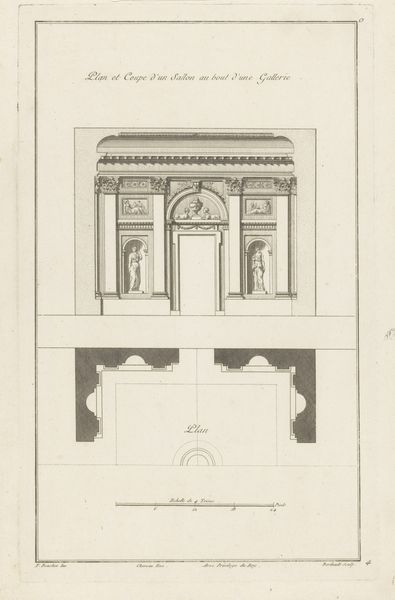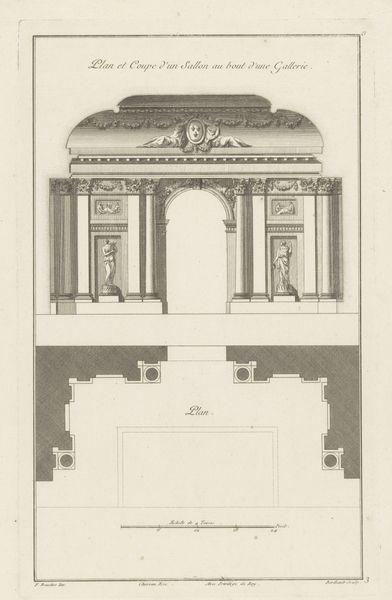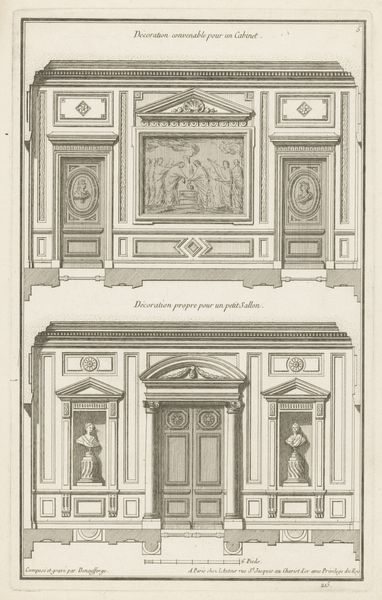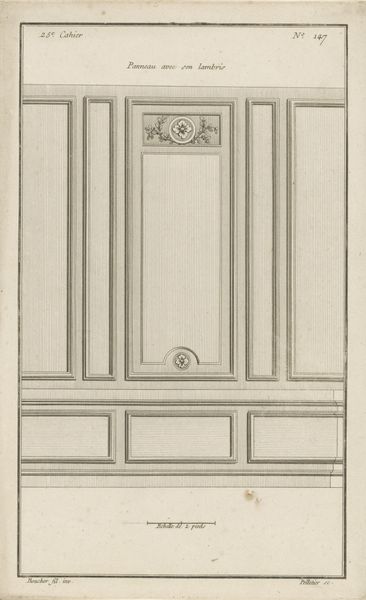
drawing, paper, engraving, architecture
#
drawing
#
neoclacissism
#
classical-realism
#
paper
#
form
#
geometric
#
classicism
#
line
#
history-painting
#
engraving
#
architecture
Dimensions: height 355 mm, width 225 mm
Copyright: Rijks Museum: Open Domain
Curator: Look at this engraving, "Vestibule en antichambre," created around 1761 by Jean François de Neufforge. It's held at the Rijksmuseum and shows designs for interior architectural paneling. What’s your immediate reaction? Editor: Austere, I think. Severely gorgeous. Like stepping into a very particular kind of 18th-century dream. I wonder what kind of person imagines living inside such geometric elegance? Curator: Right? Well, consider that this was a time when architecture, design, and social status were heavily intertwined. Neufforge wasn’t just an artist; he was part of a whole production chain where these designs would influence craftspeople building these interiors for the wealthy. We need to think about the laborers cutting the wood, installing the panels, following this template of classical form. Editor: Absolutely, and maybe that statue in the upper vestibule design is key. What narratives were considered desirable at that point? Was that classical sculpture purely aesthetic, or did it come loaded with social significance about the owner? Curator: It’s a visual shorthand for wealth, education, and sophistication, very likely alluding to virtues associated with antiquity, fitting perfectly within the Neoclassical movement which was reacting against the Rococo frills. It connects interior space to broader ideological programs, reinforcing hierarchical social relations via carefully chosen artistic conventions and methods. Editor: So even the precision and implied coldness becomes a deliberate message of self-control and rationalism… I think I can almost hear the echoes of formal conversation bouncing off those very formal walls! Did the owners even think of it as a stage for crafting their identities, carefully choosing decor that screamed ‘elite’? Curator: Precisely. So "Vestibule en antichambre" reminds us that behind beauty lies not just skill but social codes materialized via specific labor processes and material choices shaping 18th-century aristocratic identity. Editor: Exactly. Now, all that remains is figuring how this kind of structured splendor translates in today’s interior decorating market!
Comments
No comments
Be the first to comment and join the conversation on the ultimate creative platform.
